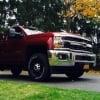- -3
"ENGINE POWER REDUCED, SERVICE TRACTION CONTROL, SERVICE STABILITR
-
Similar Content
-
- 1 reply
- 196 views
-
HELP! For the time being WAMS is not doing BCM programming to retro fit OEM ventilated seats!!
By Jgrazy22,
- 2 replies
- 348 views
-
- 2 replies
- 4,191 views
-
- 0 replies
- 496 views
-
- 2 replies
- 1,403 views
-
-
Recently Browsing 0 members
- No registered users viewing this page.
-
Forum Statistics
247.7k
Total Topics2.6m
Total Posts -
Member Statistics
-
Who's Online 17 Members, 0 Anonymous, 1,812 Guests (See full list)


















Question
RickyEMT
"ENGINE POWER REDUCED, SERVICE TRACTION CONTROL, SERVICE STABILITRAK"
Has anyone ever came across this before?
Let me start from the beginning. On 11/2932013, halfway on my drive from work to home, I noticed that my truck would "sputter" and the rpm would fluctuate when giving it some gas while going up a hill/incline (interstate). Once I was done with the hill/incline, everything would smooth out. Closer to home, once again, I would only notice the "sputter-like" reaction and rpm fluctuating slightly when giving it gas to climb a hill/incline. Made it home fine with no problems or warnings/lights. Upon embarking to work the next morning (11/30/2013), at approximately 5-6 miles from home, I went to give the truck some gas to get above 60 and all of a sudden all these warnings and dings starting going off. My engine warning light illuminated and my traction control light came on and I noticed some warnings scrolling through at the bottom saying: "ENGINE POWER REDUCED, SERVICE TRACTION CONTROL, SERVICE STABILITRAK". it blew my mind! Meanwhile, I noticed my truck slowing down no matter how much gas I gave it. I was coming to a road intersection just ahead and preceded to turn around and pull over to investigate. I couldn't understand what was going on so since I was close to home, I just "limped" it back home and not getting over 40-45 mph. Got home and shut engine off and called my job. I went back out later before my ride got there to pick me up, and started my truck. It started fine and I didn't notice any "sputtering" like before, however the engine light is still illuminated. I can't do anything until this Wednesday anyway. Is there someone that has come across this before? The day it happened I Google'd to my heart's content and found that I am not alone, however I did notice that there can be a number of things that could cause this. Would any of this be covered under a warranty? How would I know if I still have warranty on my truck? I need some expert advice on this. Here is my truck info to the best of my knowledge:
2010 Chevrolet Silverado 1500 LT
Taupe Gray
5.3 L V8
Crew Cab
Any help will be greatly appreciated!
Thanks,
Link to comment
Share on other sites
Top Posters For This Question
6
5
4
4
Popular Days
Dec 1
5
Mar 13
5
Feb 27
5
Dec 17
4
Top Posters For This Question
Dnt 6 posts
gmtech4 5 posts
Doug_Scott 4 posts
arwiltsey 4 posts
Popular Days
Dec 1 2013
5 posts
Mar 13 2014
5 posts
Feb 27 2014
5 posts
Dec 17 2013
4 posts
Popular Posts
Mike940d
Same exact thing happened to me in my 2010 Silverado at about 60k, it freaked me out too. I did some research and it turned out to be a bad throttle body. I ordered one off amazon($140) and installed
RickyEMT
Sorry for the lack of information! Purchase Date: January 18, 2010 Current Mileage: 73,434 Last PM was at 70,000. I did have a transmission fluid exchange service on 9/15/2012 along with a
dsmmace
I have been battling this issue for a couple weeks now since it turned cold here. I ended up getting the service kit and a ecm reprogram under the extended warranty program gm offered. I had the
58 answers to this question
Recommended Posts
Join the conversation
You can post now and register later. If you have an account, sign in now to post with your account.